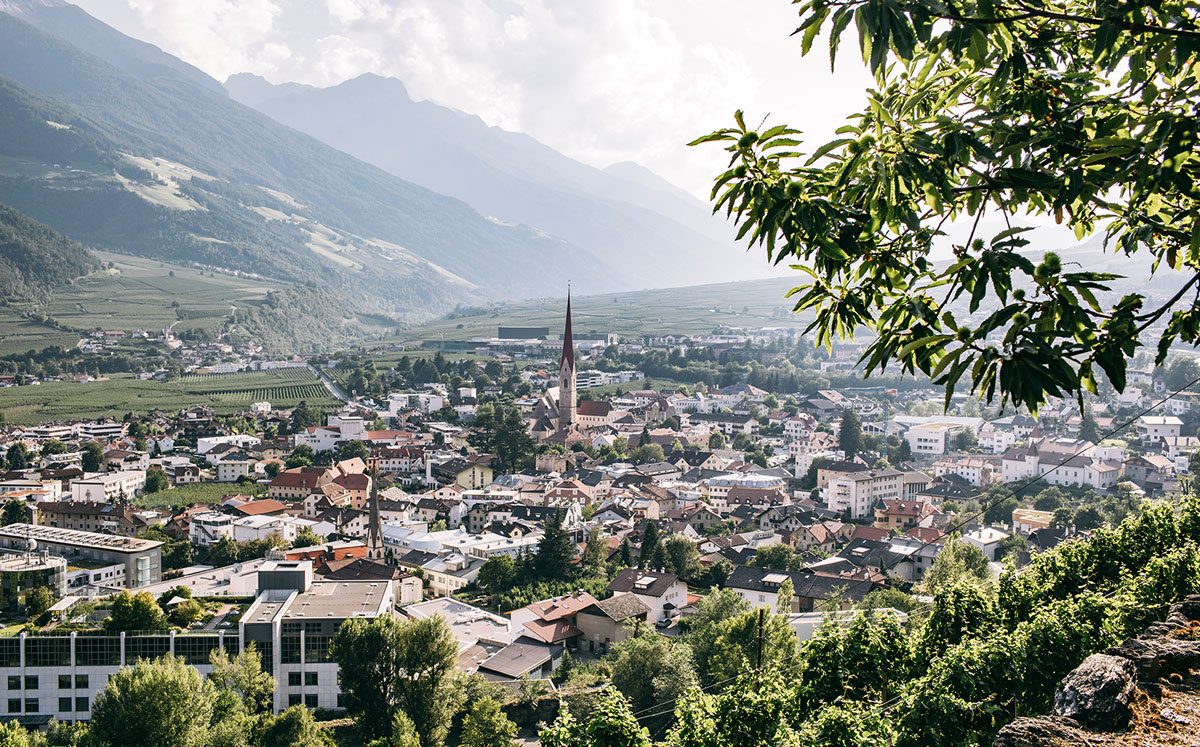How to reach Silandro
Attractions:
– The National Park Visitor Center Avimundus
– Schlandersburg Castle
Silandro/Schlanders, the capital of the Venosta Valley, boasts approximately 6000 inhabitants. The community is nestled among the end of the Schlandrauntal Valley, the Lasa mountains, and the typical Venosta Valley orchards and vineyards. Silandro is the economic center of the entire Venosta Valley, and home to many companies, cooperatives and the hospital.
The emblem of the municipality is the tower of the Gothic parish church of Maria Ascension, which at about 90 m in height, is the highest church tower in the Tyrol. A further landmark is the magnificent Schlandersburg Renaissance Castle with its picturesque, two-storey arcaded courtyard. The traffic-free pedestrian zone around the narrow, winding streets and small cafes and shops gives Silandro an urban flair and invites visitors to take an unhurried stroll.
Art and Culture:
As a diverse country of contrasts, the Venosta Valley was an important gateway valley on the Adige River since Roman times and has been settled since prehistoric times. The valley was not only a connecting route over the Alps, but also a center of marble quarrying. Additionally, the Venosta Valley was rarely the scene of armed conflict. Thus, valuable monuments remain standing to this day.
Nature, culture and unadulterated enjoyment – this is the hallmark of Venosta Valley. Agriculture continues to play a major role today in the valley of connoisseurs. Time goes by differently here – the rhythm of daily life, work, and regional cuisine are adapted to the climate and the seasons.
Sun, wind and little precipitation characterize the valley. This excellent microclimate helps bear sweet fruit on the farms. Venosta Valley is today home to high quality produce. Here you will find old fruit varieties such as the Venosta Valley apricot or Palabirne (pear), and cabbage products – specialities, which are still sold direct from the farm and in farmers markets. Additionally, fields of grain, fruit and vegetable planations, and vineyards at altitudes up to 1000 m above sea level can be found here.
Shopping: Apples, apricots, cabbage and marble: The Silandro and Lasa holiday area in the Venosta Valley is known for its regional delicacies and the purest marble in the world. The variety of Italian fashion boutiques, shoe stores and sportswear stores make the area the shopping center of the Venosta Valley culture region.
